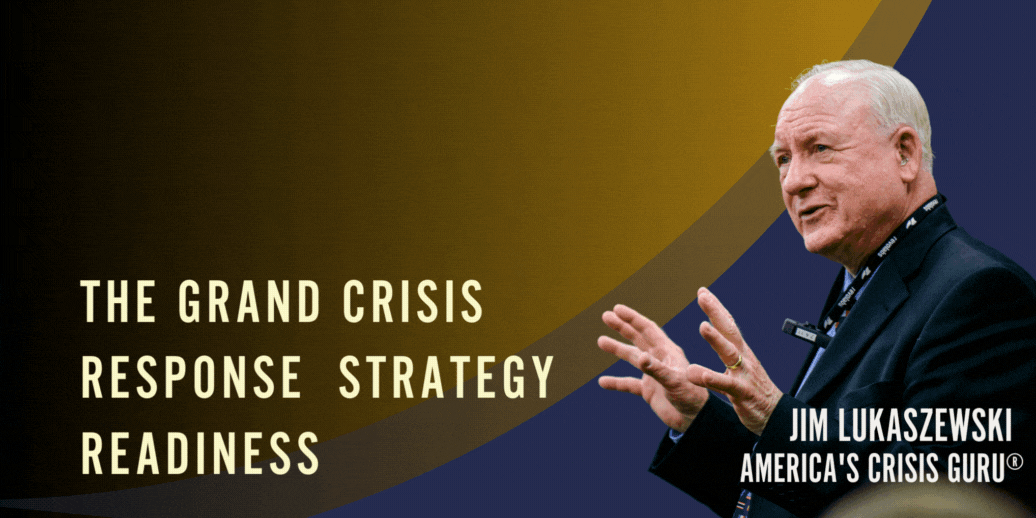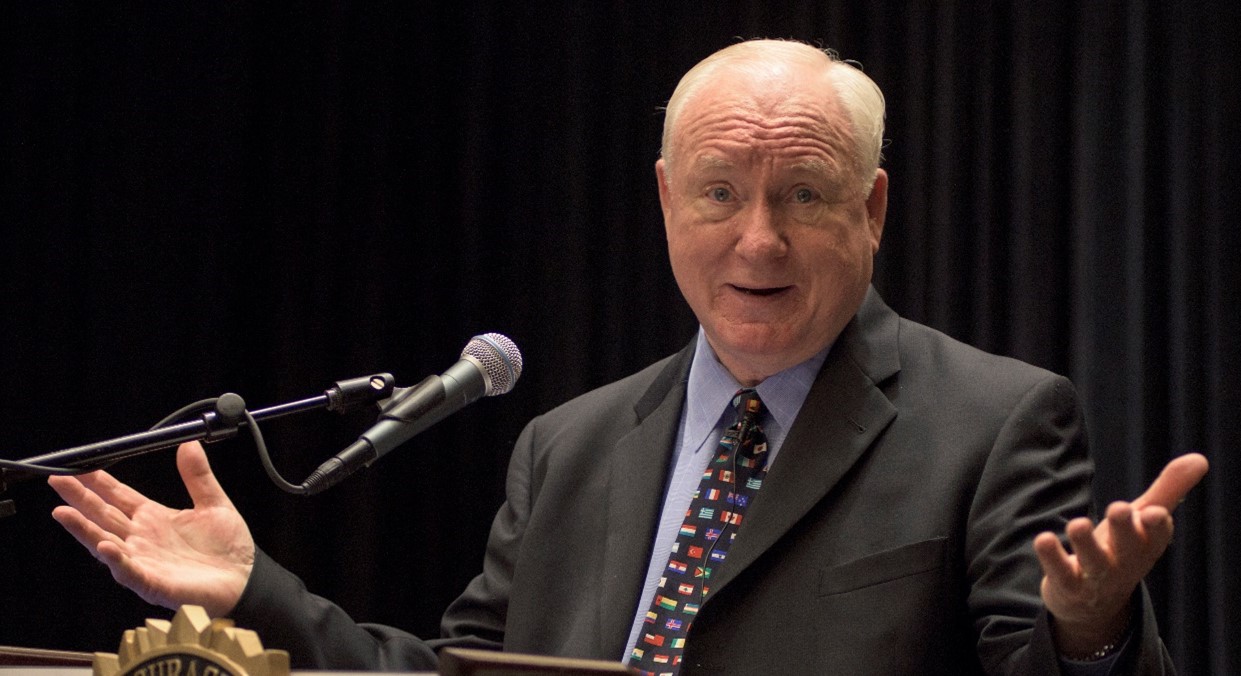Five Crucial Time-Sensitive Readiness Steps
For Getting the Most Important Things Done
And describable
From the Start of a Crisis.
by James E. Lukaszewski, ABC, Fellow IABC, APR, Fellow PRSA, BEPS Emeritus
America’s Crisis Guru®
The most reputationally challenging time in crisis is at the start and very early crisis moments. So little is known and is very sketchy. The slightest awkward silence, whatever the reason, causes ripples of questions and trouble throughout your response.
Stop thinking, talking, and describing crisis…think, talk, and describe READINESS.
If your readiness preparations follow a grand strategy including speaking from the start, the danger of unexplainable and questioned silences can be avoided. Unfolding event patterns teach you what actual future responses will be required. Choosing to remain silent, whatever the reason, once discovered, is frequently a fatal management career error.
Because you will require some time to understand exactly what is going on you can immediately implement a strategic five-step first communication management response. The goal is to launch your response narrative, and your first response action intentions within the first 60-120 minutes of the crisis incident, whatever the crisis happens to be. Link to Jim’s Wisdom #47
When you don’t (and you often can’t) exactly know what’s happening you can describe and discuss the strategic, and incremental response action steps to be taken, and those already underway.
The Grand Response Readiness Strategies:
- Stop the production of victims. This is response goal #1. Continuous victim production and response mistakes are what drives media coverage, survivor and public interest, the emotionalization, the commentary and criticism from 1000 different sources focused on your reputation destruction.
- Manage the victim dimension. This is what leaders and senior managers should be overseeing rather than hanging around and second-guessing the command center. Link to Concise Advice #21.
- Calm and settle down employees and those directly affected. Communicate directly and frequently with employees, stakeholders, survivors, and those directly affected. Use frequent brief 50–150-word internal statements. These are more easily created, understood, approved, and released than news releases.
- Notify those indirectly affected, those who will have a problem or have a problem now because you have a problem; regulators, licensing authorities, neighbors, partners, collaborators, key stakeholders, those who need to know and who should hear from you very promptly.
- Manage the self-appointed, the self-anointed; the news media and the new media, those who opt in on their own, the critics, the bellyachers, the backbench bickerers, and the bloviators.
- Your message and statement content is the same information you have provided internally a bit earlier.
This is the strategy management needs to help everyone affected inside and outside focus on what matters most and first. Far too many response plans have only legacy media public relations-driven tactics. Readiness for crisis communication response is a management responsibility driven by simple, sensible, constructive, positive, and clearly achievable communication techniques. Communication that begins externally always conflicts with what insiders know. It’s problematic.
Always remember, the technically perfect response appears to be flawed if there is a failure to promptly speak in the early going. Silence always implies doing nothing while victims are being created. There is no credible, believable, or acceptable explanation. The toxicity of silence is completely predictable and preventable.
Key Snap Readiness Wisdoms:
- A crisis is defined as a:
- People-stopping, show-stopping, product-stopping.
- Reputation redefining events that create victims and/or explosive visibility. I’ve yet to find or see a more clear and concise crisis definition.
- “Crisis Management” is a PR term invented to scare managers and leaders into funding communication and other crises related activities. Stop using it.
- “Readiness” is a management term (from 9-11-01) that drives serious and often crucial activities that directly and promptly address serious problems.
- All organizations have problems. That’s really what management primarily exists to remedy. Crises are extremely rare. Crises are always crucial problems that need to be prepared for.
- Even the most technically perfect crisis response will be remembered badly, permanently if communication fails in the beginning. Regardless of the problem itself, the blame will fall on those that failed to communicate appropriately and strategically from the beginning.
- Silence always implies doing nothing while victims are being created. There is no credible, believable, or acceptable explanation.
- The toxicity of silence is completely predictable and preventable.
- Silence, stalling, blame-shifting, and other diversion strategies, if discovered and revealed, are often fatal professional errors by those in charge, however competent they may be.


